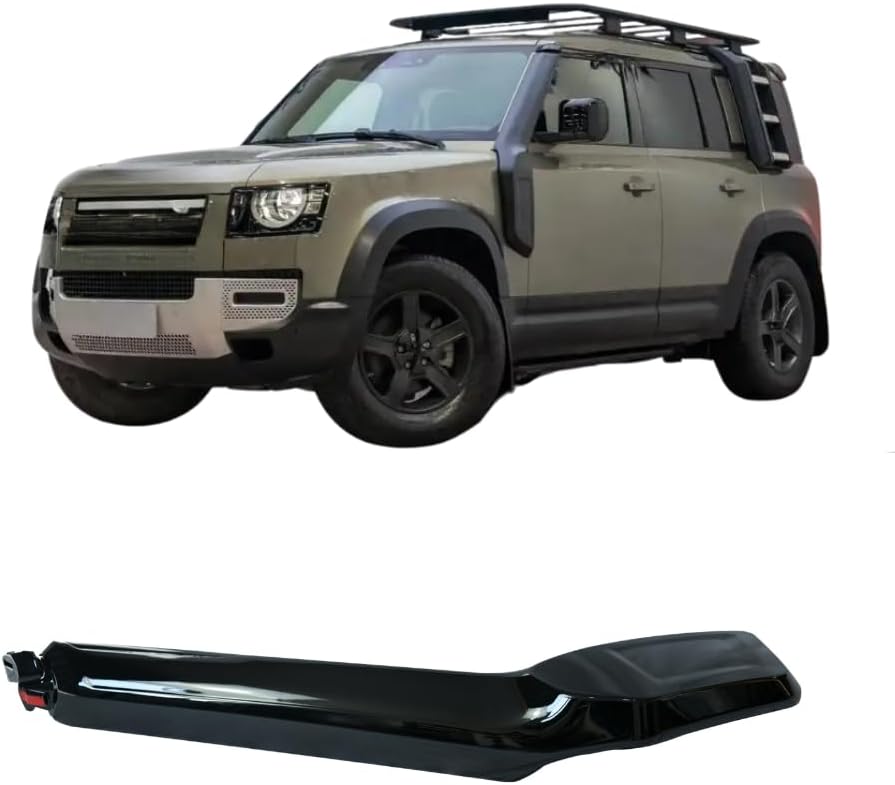Bow Waves & Breathers: Tech and Technique for Deep Water Fording
Bow Waves & Breathers: Tech and Technique for Deep Water Fording
Last resort only. Crossing moving water is risky; turning back is usually the best call. When there’s truly no alternative, understanding bow waves, snorkels, and extended differential breathers helps you reduce (not remove) the danger. This guide explains the physics and gives you a calm, step-by-step process.
Bow wave 101: why it helps
- A controlled bow wave pushes water ahead, creating a temporary trough at the grille/engine bay so the waterline is lower there than outside.
- This reduces splash into the intake and electrics and lowers hydrodynamic drag.
- Enter slowly, then settle to a steady walking pace (no throttle spikes).
- Keep the wave just touching the bumper. If it breaks over the bonnet, you’re too fast or too deep—abort.
- Maintain constant speed; shifting or braking collapses the wave.
Snorkels: what they do (and don’t)
- Do: Raise the air intake above the bow wave and dust; reduce risk of hydrolock from splash or brief immersion.
- Don’t: Make your rig waterproof. Water can still enter via door/bonnet seals, breathers, vents, wiring, or exhaust if stalled.
- Sealing matters: Seal the entire intake tract (airbox joints, drain ports) per kit instructions; pressure-test after install.
Extended differential breathers: tiny parts, big save
- Diffs, gearbox, and transfer case heat up while driving; when suddenly cooled by water, they inhale through breathers.
- If the breather is submerged, they inhale water → milky oil, bearing wear, expensive rebuilds.
- Run breather hoses to a high, dry point in the engine bay with one-way filters.
- After any deep crossing, check fluids for milkiness within 24–48 hours.
Vehicle prep (5–10 minutes)
- Assess first: Depth, current, entry/exit (see Parts 1–2). Turn back if in doubt.
- Snorkel & intake: Inspect clamps/seals. Remove a loose pre-cleaner sock that could saturate.
- Electrics: Dial lights off (hot lamps can crack in water). Secure winch controller, check isolator.
- Recovery staging: Tree saver/strap accessible, shackles on, line damper ready, windows cracked for comms.
- Cabin: Low gear (4L), manual 1st or auto in manual mode. Disable auto stop/start.
Step-by-step fording (single vehicle)
- Line up square to the entry; select 4L, traction/ABS in snow/wet mode if available.
- Enter slow, then hold a steady walking pace to build the bow wave. Eyes on the exit, not the bonnet.
- Steer gently. Big inputs collapse the wave and increase drag.
- No clutch slips/fan surges. Avoid rev spikes; viscous/electric fans can spray water—some rigs allow a temporary fan disable.
- Commit to the exit. Do not stop midstream. If the engine coughs or the wave breaks over the bonnet—abort by reversing along your entry line if safe.
Depth, time & hard abort rules
- Depth: Stay below the rated wading depth for your vehicle even with a snorkel. Diff/ECU height still limits you.
- Time: Keep immersion short; long soaks cool driveline parts and invite water ingress.
- Abort if: Water reaches bonnet vents; current pushes you sideways; you lose traction; wave collapses; visibility of exit is lost.
Post-crossing care
- Brake dry: Gentle taps while rolling on firm ground.
- Check fluids (diffs, gearbox, transfer) for milkiness after the day’s driving.
- Clean & re-lube winch, shackles, and recovery gear. Rinse mud/grit from boards and straps.
Recommended gear for deep water work
Exact products per your list. Buttons include proper rel="nofollow sponsored noopener noreferrer".

4×4 Snorkels & Wading Kits
Raise intake, seal airbox joints, reduce hydrolock risk.
✅ See Options
Extended Diff Breather Kit
Route breathers high & dry to keep water out of oils.
✅ Check Price
ARB Recovery Kit
Quality rigging for controlled pulls on wet exits.
✅ Check Price
Waterproof Roll-Top Dry Bag
Keep electronics and warm layers dry while you scout.
✅ Check OptionsDisclosure: Some links/images above go to Amazon. As an Amazon Associate we may earn from qualifying purchases—this never affects our editorial verdict.




Comments